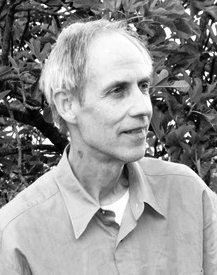
New Article by Paul Pitchford, Author of Healing With Whole Foods
Categories: Food & Nutrition

Paul Pitchford is the author of the bestselling book, Healing with Whole Foods: Asian Traditions and Modern Nutrition. Pitchford is a leading authority in the field of nutrition and foundational healing. In the following article, Pitchford explains how one can balance their daily diet in order to consume a healthy amount of protein. He also explores the important connection between mind, body, and nutrition.
Protein Perspectives: Modern Nutrition & Eastern Traditions
By Paul Pitchford
There’s been a flurry of media response to the mega-protein diets, and for good reason: the largest selling books worldwide in the past couple years have focused on these diets. And due to this widespread information, virtually everyone I know with an interest in nutrition, both vegetarian and omnivore, has re-assessed personal protein needs. Why has dramatic interest in protein surfaced at this time? We might surmise it’s from stress at this frenetic point in our history, as protein foods antidote stress with stabilizing, relaxing and strengthening therapeutic actions.
Yet despite all the talk about protein, rarely does anyone eat an unrefined food that is more than 25% protein by weight. Thus “eating protein” most often means eating foods that are especially protein rich. Examples of such foods are nuts, seeds, beans, soy products and most meats, including the red meats, pork (sometimes considered a white meat), fish, and fowl as well as eggs.
However, all plants also contain protein, and convincing human studies in the 1950’s by Wm. Rose indicate that when energy needs are met with a food, protein needs are automatically satisfied. For example, potatoes or rice easily meet our protein needs when one simply eats enough to obtain sufficient calories for energy. Nevertheless such foods alone rarely satisfy those who crave “protein.” Research by the world’s foremost protein expert, Dr. Scrimshaw, head of the Nutrition Department at Massachusetts Institute of Technology, provides an insight. His cross-cultural studies reveal that, given the opportunity, people will consume three times more protein than their true needs. In the poorer countries, this rarely manifests, but in first world countries, protein over-consumption is commonplace, being most easily accomplished with animal products.
If true protein needs are so easily satisfied, even by complex carbohydrates such as grains, what is really being craved? I feel that when meat is craved, it is the rich, highly assimilable matrix of nutrients in meat that is desired. The animal has performed the work of converting vegetal foods into tissues not so different from our own. Thus many individuals will assimilate iron, certain vitamins, and other nutrients from meat more readily than from grains and beans. This is especially true of those with cultural heritages characterized by meat-centric diets. According to the Ayurvedic healing system of India and Chinese traditional healing arts, meat strengthens us, but only when eaten in moderation. And “moderation” generally means 3-4 ounces a day. This figure corresponds to what many nutritionists now suggest for healthful meat consumption.
When meat, seafood and fowl intake exceeds eight ounces a day, the resultant protein can cause more calcium excretion than is assimilated, thus promoting osteoporosis or bone loss. In fact, osteoporosis is widespread in the developed countries, more so than in poorer areas. Thin, underfed people in India often have stronger bones than big, beefy Americans. This is due to our eating patterns: research over the past 40 years has shown that the single greatest contributor to bone loss is the acids from too much dietary protein. Other research over the same time frame suggests that kidney failure is most frequently a result of excessive protein consumption. Interestingly, traditional Chinese medicine unifies these health concerns with the view that the kidney-adrenals rule the bones. Furthermore, the kidney-adrenals are said to rule the brain—sometimes referred to as the “sea of marrow”. Can Alzheimer’s disease also be traced to protein excess?
Perhaps. In Ayurveda, a sticky, toxic residue known as “ama” is associated with eating animal products. Uncannily, recent research finds that a sticky protein polysaccharide called amyloid plaque obstructs brain pathways in those with Alzheimer’s. (The ancient teacher Gautama Buddha suggested that those interested in developing their higher faculties should avoid meat.) This same plaque obstructs the arteries in most forms of heart and vascular disease and is also implicated in the genesis of cancer.
The most comprehensive nutrition studies in history were performed in China in the latter part of the Twentieth Century. These studies, sponsored by Cornell and Oxford Universities and the Chinese government, showed that Americans, particularly American men, had a 1700 percent greater incidence of heart disease than Asians eating a grain and vegetable based diet. Ninety percent of the protein in these diets is from plant sources. Wealthy Chinese eating rich diets had heart disease similar to the Americans. Not surprisingly, other degenerative diseases, including diabetes and cancer, were less likely in those eating traditional Asian fare.
Nevertheless, I find myself, a vegan for 30 years, recommending animal products to some of my clients with signs of deficiency and weakness. For the many who don’t do well with dairy foods, I often suggest a moderate amount (4 ounces or less, several times a week) of quality meats, meaning organic and free range. The negative, ama/amyloid-forming aspects of meat, fish and fowl can be countered with a vinegar-water marinade as well as cooking them into soups and stews with common spices (e.g., marjoram, rosemary, thyme, fennel, ginger, or sage). Cooking or eating animal foods with abundant vegetables and bean sprouts also reduces ama pathology.
Individuals who over-consume meat may have short term weight loss and fewer sugar imbalances (protein controls sugar cravings), but at the risk of bone loss and kidney degeneration. Additionally meat is extremely high in inflammatory prostaglandins of the type PGE2, which greatly contribute to infections and degenerations such as arthritis. Popular books by the late Dr. Atkins and others who recommend protein-rich diets tell us that carbohydrates need to be restricted in order to lose weight and control blood sugar swings. In my experience they are partially correct. Refined carbohydrates should be restricted. These include the “white foods” such as white pastas, pastries and breads that contain white, refined wheat flour and refined sugar. Also included is white rice.
All such foods are not completely utilized as they are missing minerals, fiber, precious oils, enzymes, and a plethora of phytochemicals needed for proper breakdown and metabolism, not to mention their need in supporting vital immunity. Therefore, refined food residues may stay in the tissues and promote weight gain, among other imbalances. Whole carbohydrate foods—brown rice and unrefined grains, whole grain breads, unrefined sugars (e.g., Rapidura)—do not have this effect.
It should be noted that refined oils that constitute hydrogenated fats found in common peanut butter, candy bars, margarine, and shortening also cannot be fully metabolized and thus are often stored in various tissues and organs, setting the stage for cellulite, carcinomas and other degenerations.
One would expect the protein diets to receive support from mainstream dietitians who, over the years, have been promoters of meat-based diets and recipients of funding from the meat industry. Surprisingly, however, even the American Dietetic Association sees the Atkins diet as extreme beyond reason, calling it “a nightmare.”
Many people know to avoid poor-quality foods as well as the non-foods, yet continue to ingest them. This is because our mind, body and nutrition are closely related. A mind full of toxic desires may all too easily crave toxic foods. Therefore the best starting point in our regenerative process is the mind and its intention. Food and awareness practices have historically been unified, e.g., in both the ancient Orient and Occident, prayer and meditation have always accompanied dietary purifications such as fasting. When people begin with real emotional and spiritual healing, dietary upgrades tend to be second nature and effortless. There are few things more dissatisfying than eating a diet that does not match one’s current mental outlook.
Thus the first priority in my nutritional work is to recommend quieting the mind. This brings mindfulness to all we do, and through such self-awareness, one tends to change toward balance in all life activities.
The second priority is activity. In Far Eastern tradition, without adequate exercise our digestive fire becomes weak, and even the best organic foods may not help us. So I feel that one ideally develops good mental and physical habits before undertaking serious dietary change.
A message from Rumi, ancient Middle Eastern poet:
“Let that which we love
Be what we do
There are a thousand ways to kneel and kiss the earth.”
Paul Pitchford studied and apprenticed with masters of pre-Revolutionary Traditional Chinese medicine, nutrition, and Tai Ji and Chan (Zen) meditation. His landmark book, Healing with Whole Foods: Asian Traditions and Modern Nutrition, forms the foundation of his unique dietary teachings, which unify Eastern and Western therapies. Over the past 12 years, Paul has been a key lecturer with the prestigious Institute for Integrative Nutrition in New York City. His work has become a primary impetus behind the most fundamental, clinically effective and innovative dietary movement today, widely known as “whole foods nutrition.” He sees a universal shift to whole foods nutrition as essential for overcoming ecologic ravages to the Earth as well as quelling pervasive disease and degeneration among her peoples. Paul has been teaching nutrition in the context of foundational healing for 38 years. This approach prioritizes three basic integrative steps in a person’s pathway to enduring health: a) awareness practices, b) mindful movement including yoga, Tai Ji and Qi Gong, and c) nutrition based on regional, unrefined (whole) foods. He has designed and taught programs at Heartwood Institute regularly for the last 25 years. He currently receives invitations to teach worldwide and has given seminars at colleges, schools of acupuncture, nutrition and various healing arts, and on major radio shows.
Tags: Chinese Medicine & Acupuncture Paul Pitchford Ayurveda



